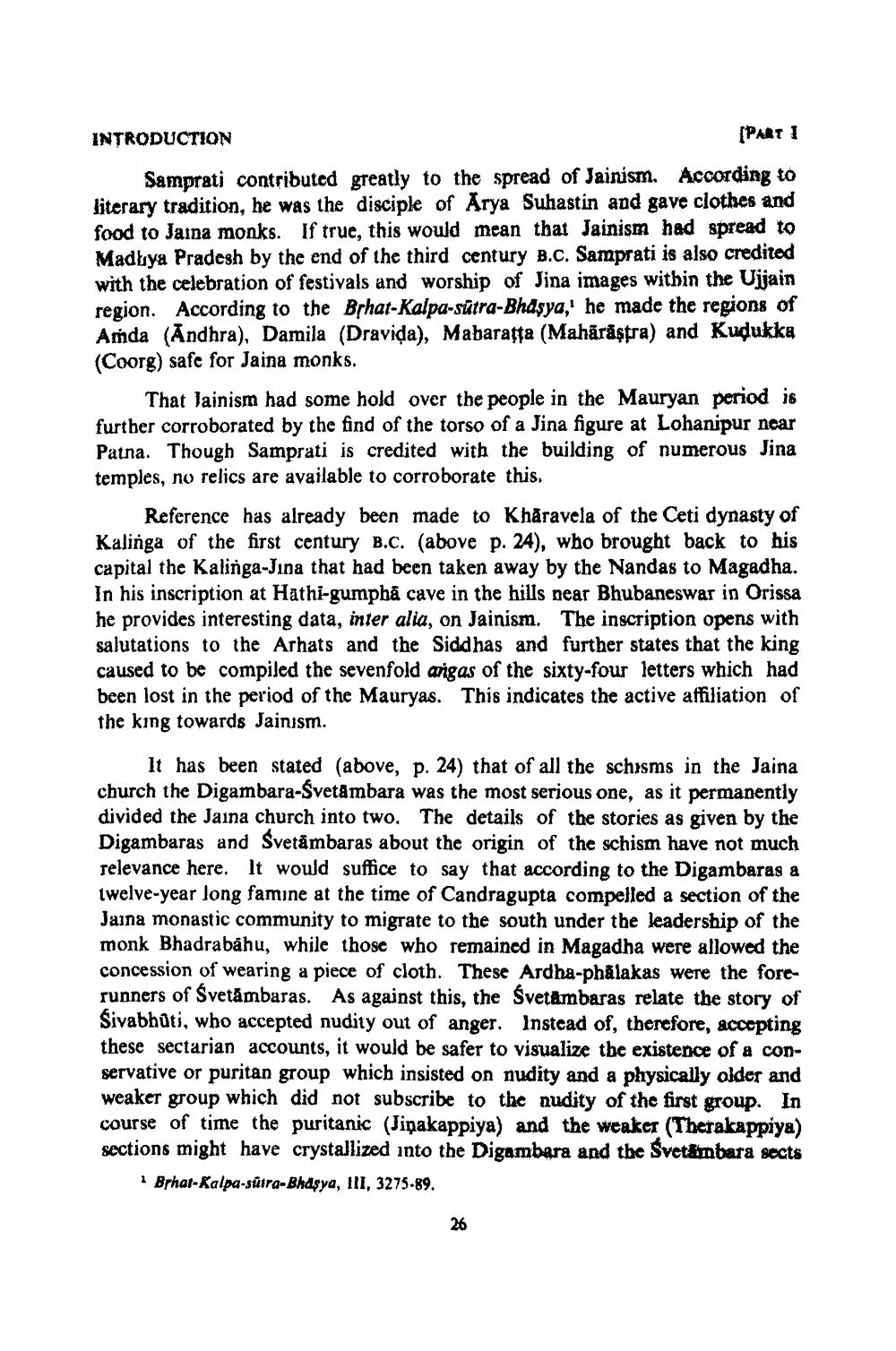________________
INTRODUCTION
[PART 1
Samprati contributed greatly to the spread of Jainism. According to literary tradition, he was the disciple of Arya Suhastin and gave clothes and food to Jaina monks. If true, this would mean that Jainism had spread to Madhya Pradesh by the end of the third century B.C. Samprati is also credited with the celebration of festivals and worship of Jina images within the Ujjain region. According to the Brhat-Kalpa-sütra-Bhasya,' he made the regions of Anda (Andhra), Damila (Dravida), Mabaratta (Mahārästra) and Kudukka (Coorg) safe for Jaina monks.
That Jainism had some hold over the people in the Mauryan period is further corroborated by the find of the torso of a Jina figure at Lohanipur near Patna. Though Samprati is credited with the building of numerous Jina temples, no relics are available to corroborate this.
Reference has already been made to Khåravela of the Ceti dynasty of Kalinga of the first century B.C. (above p. 24), who brought back to his capital the Kalinga-Jina that had been taken away by the Nandas to Magadha. In his inscription at Hathi-gumphá cave in the hills near Bhubaneswar in Orissa he provides interesting data, inter alia, on Jainism. The inscription opens with salutations to the Arhats and the Siddhas and further states that the king caused to be compiled the sevenfold angas of the sixty-four letters which had been lost in the period of the Mauryas. This indicates the active affiliation of the king towards Jainism.
It has been stated (above, p. 24) that of all the schisms in the Jaina church the Digambara-Svetämbara was the most serious one, as it permanently divided the Jaina church into two. The details of the stories as given by the Digambaras and Svetämbaras about the origin of the schism have not much relevance here. It would suffice to say that according to the Digambaras a twelve-year long famine at the time of Candragupta compelled a section of the Jaina monastic community to migrate to the south under the leadership of the monk Bhadrabahu, while those who remained in Magadha were allowed the concession of wearing a piece of cloth. These Ardha-phälakas were the forerunners of Svetāmbaras. As against this, the Svetambaras relate the story of Sivabhūti, who accepted nudity out of anger. Instead of, therefore, accepting these sectarian accounts, it would be safer to visualize the existence of a conservative or puritan group which insisted on nudity and a physically older and weaker group which did not subscribe to thc nudity of the first group. In course of time the puritanic (Jinakappiya) and the weaker (Therakappiya) sections might have crystallized into the Digambara and the Svetämbara sects
Bahar-Kalpa-sútra-Bhasya, III, 3275-89.




